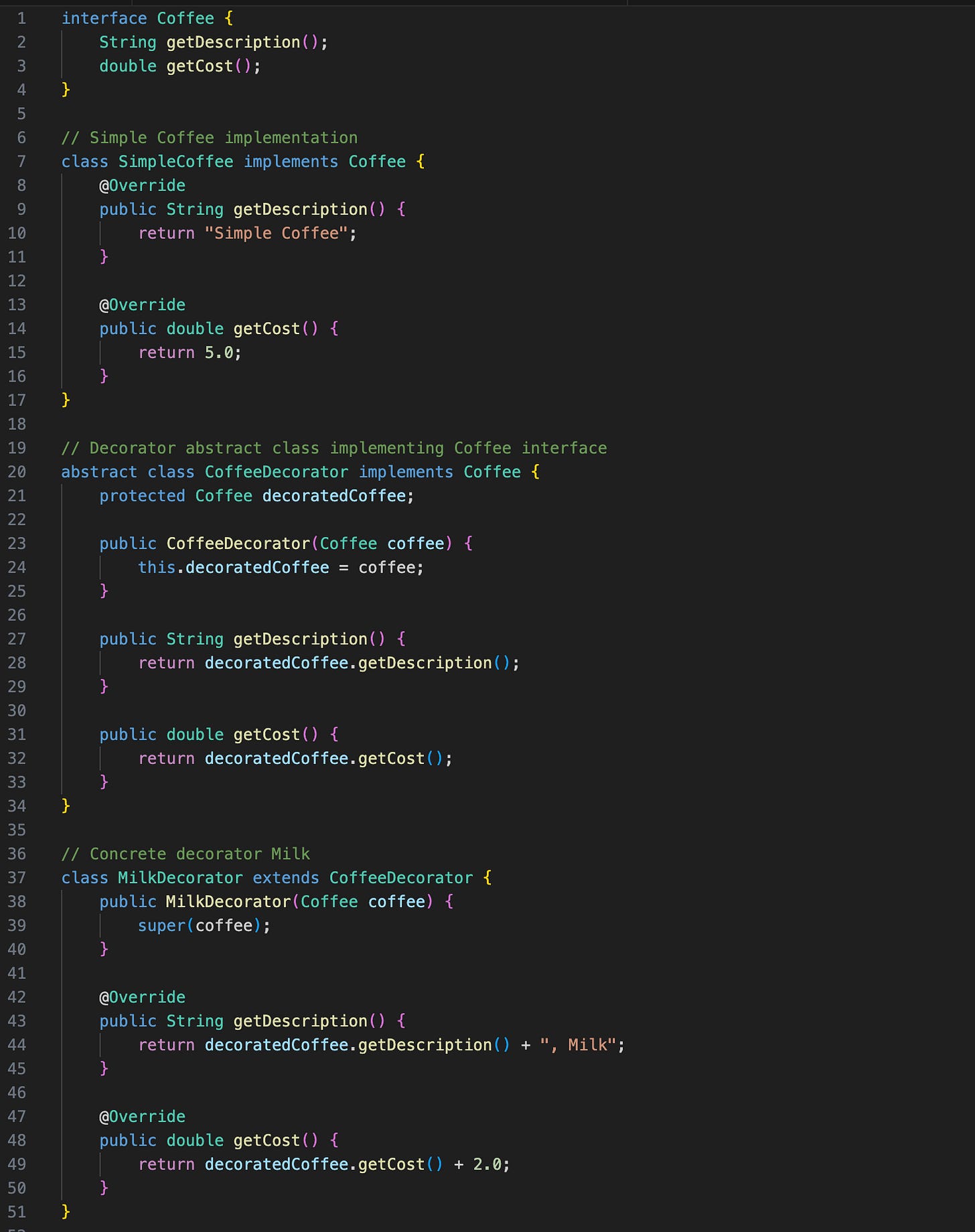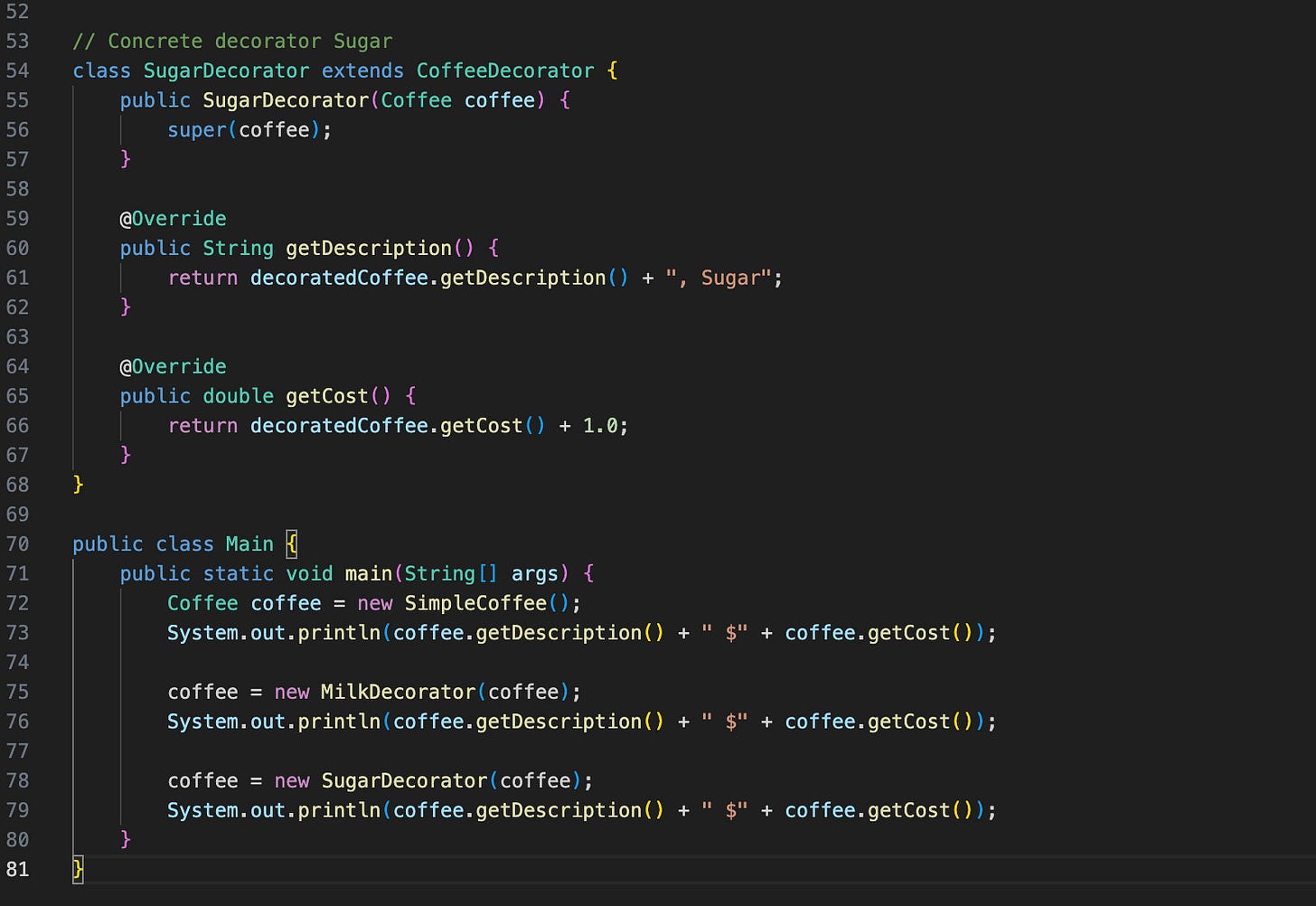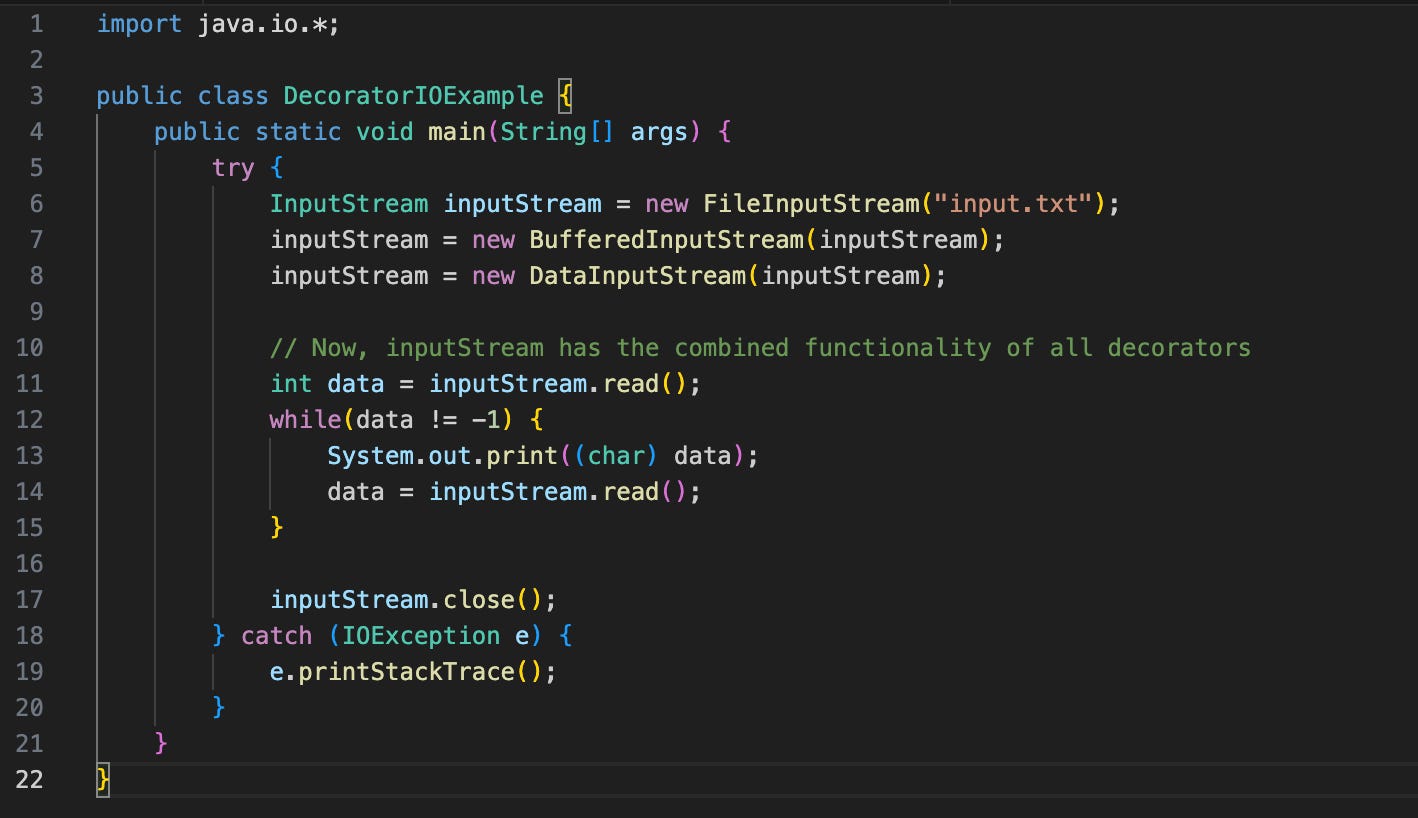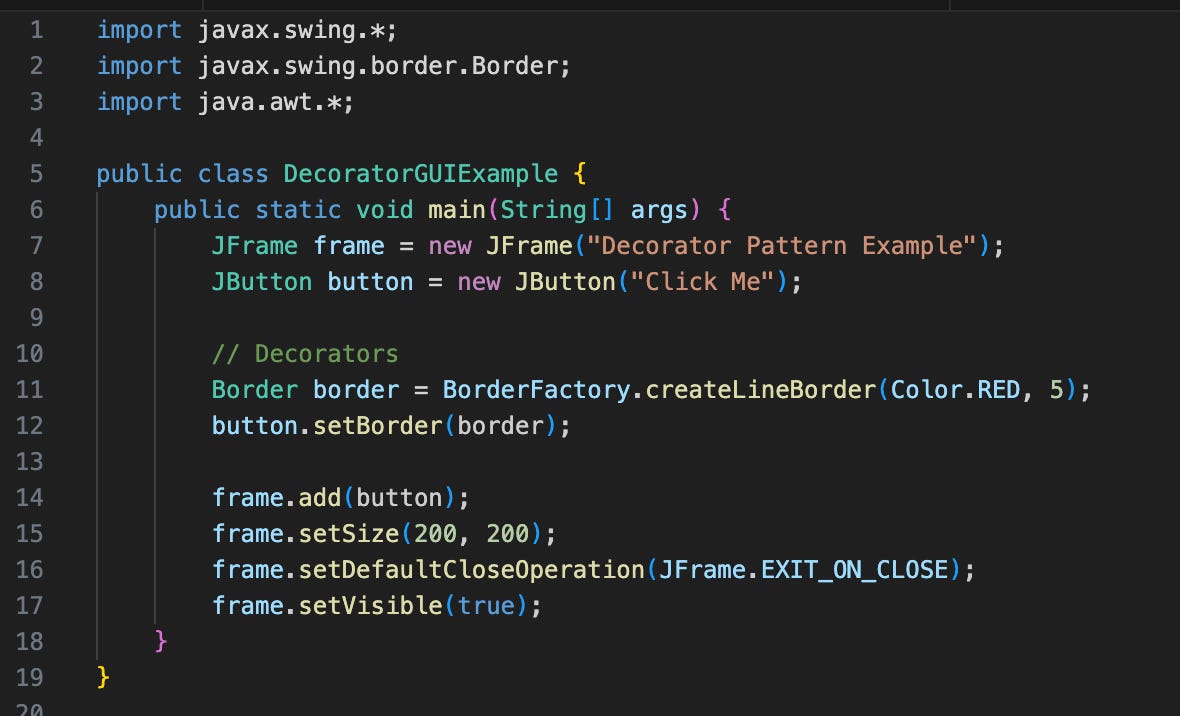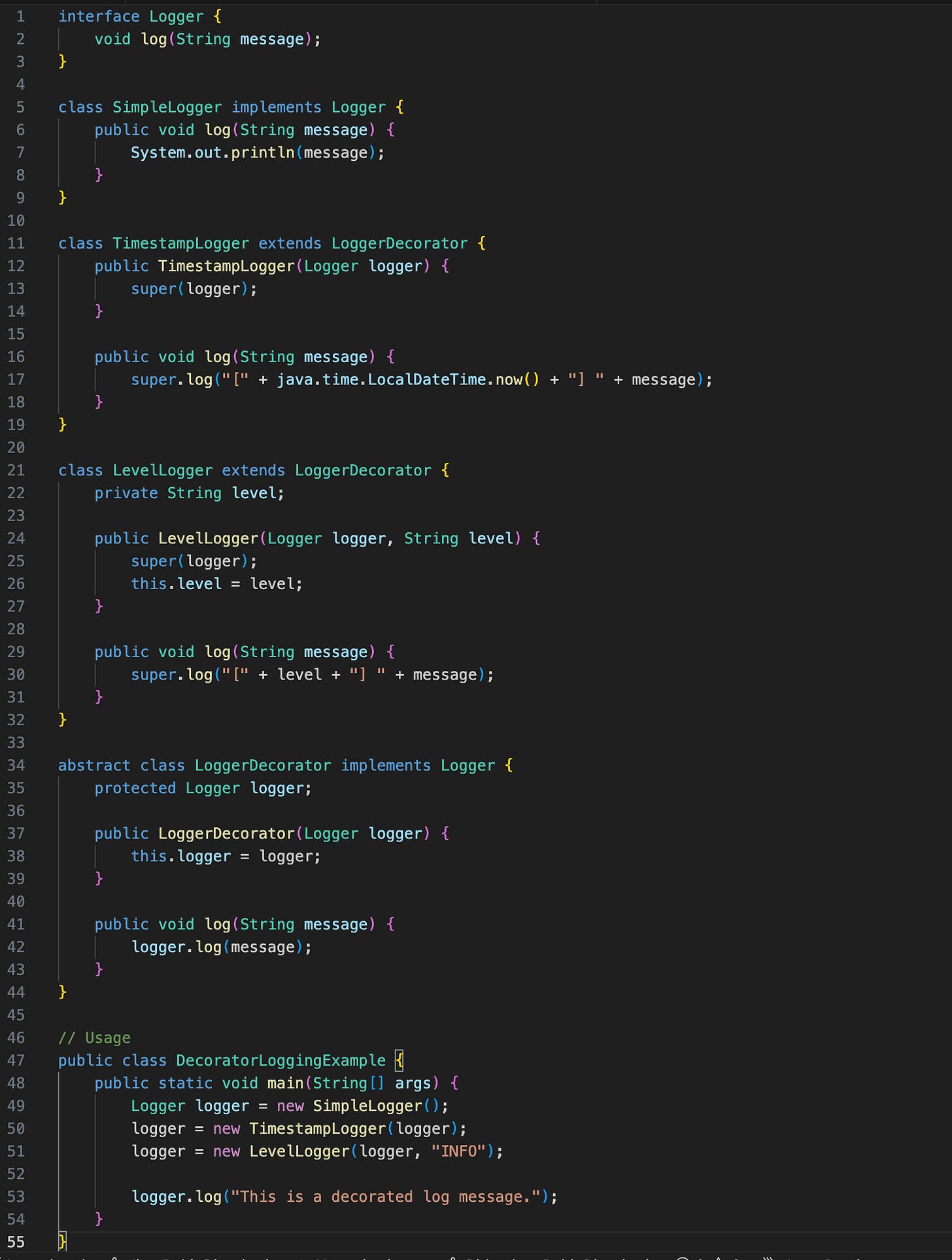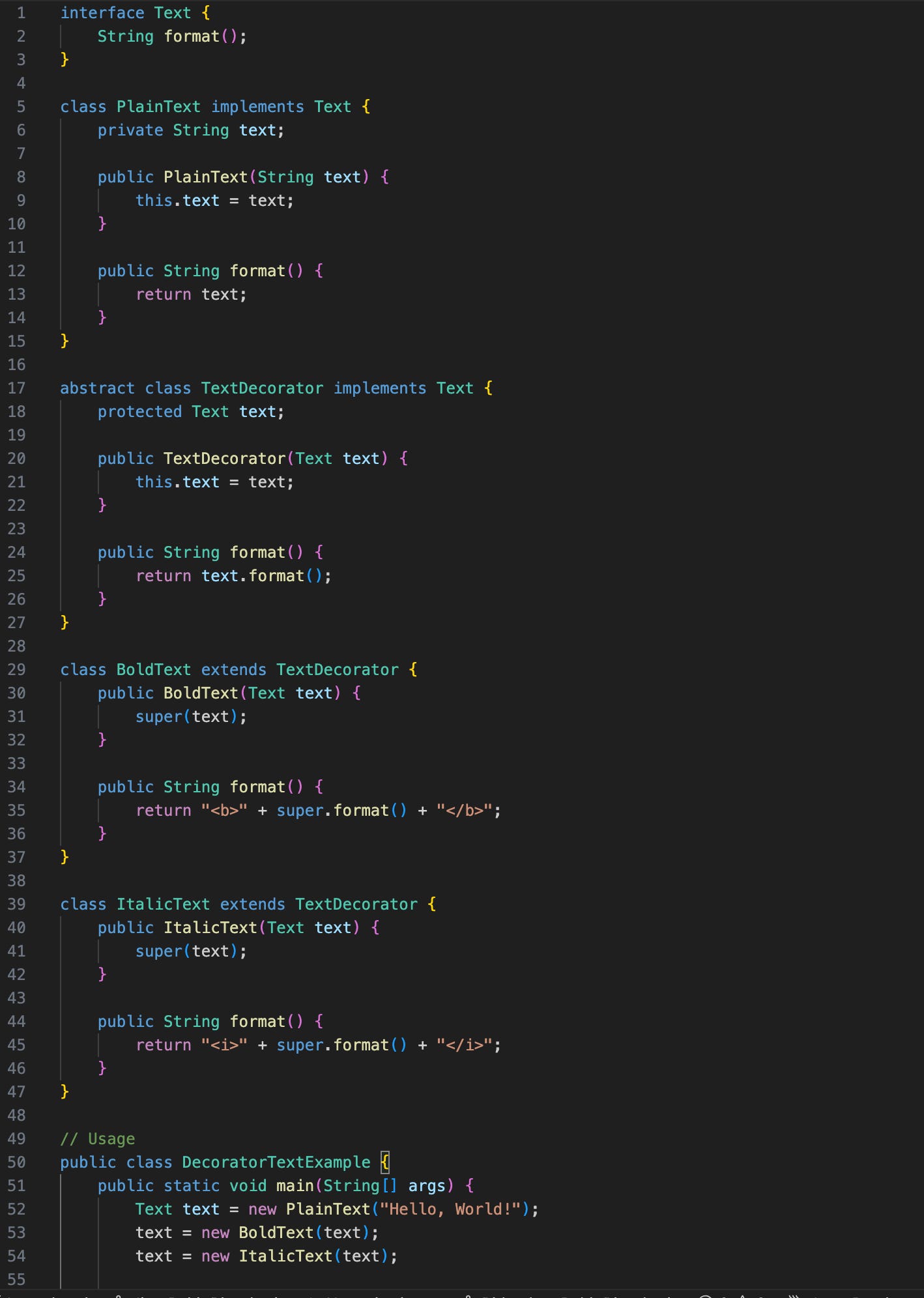The Decorator Design Pattern is handy because it lets you add new behavior to an object without changing its original class. It follows the Open/Closed Principle-meaning your code can grow without messing with existing stuff.
Instead of creating a bunch of subclasses for every possible behavior combo, you can just wrap objects with decorators and tweak their behavior on the fly.
Why Code Can Be Bad Without It
Without the Decorator pattern, adding functionality to an object often involves subclassing. This leads to a proliferation of subclasses and a rigidclass hierarchy. Additionally, if you need to combine multiple behaviors, the subclassing approach can lead to an exponential increase in the number of classes.
Example
Suppose you have a Coffee class, and you want to add various condiments(like milk, sugar, etc.). Without the Decorator Pattern, you might be temptedto use inheritance, which can lead to a combinatorial explosion of subclasses:
Problems:
Class Explosion: As you add more condiments, the number of subclasses increases exponentially.
Inflexibility: If you need to add or remove a condiment, you need a new subclass.
Code Duplication: Similar functionality (e.g., adding milk) is repeated across multiple classes.
Improved Code with Decorator Pattern
With the Decorator pattern, you can add functionalities dynamically without creating a complex class hierarchy.
Advantages:
Flexibility: You can add or remove decorators at runtime without modifying existing code.
Reusability: Decorators can be combined in various ways to achieve different functionalities.
Single Responsibility: Each decorator adds a specific responsibility (e.g., adding milk), keeping the code modular.
Real-world use cases
The Decorator Design Pattern is widely used in real-world applications across various domains. Here are a few practical examples where the Decorator Pattern is used:
1. Java I/O Streams
One of the most well-known uses of the Decorator Pattern is in Java’s I/O classes. The java.io package heavily uses decorators to add functionality to streams.
Explanation:
The
FileInputStreamreads bytes from a file.The
BufferedInputStreamadds buffering to improve reading efficiency.The
DataInputStreamallows reading of primitive data types (int, float, etc.) from the input stream.Each decorator adds its own functionality while keeping the interface consistent.
2. Graphical User Interface (GUI) Components
In GUI frameworks like Java’s Swing, the Decorator Pattern is used to add behaviors such as borders, scroll bars, and decorations to UI components.
Explanation:
Here,
BorderFactory.createLineBorderis a decorator that adds a red border around the button.Without modifying the original
JButtonclass, we've enhanced its appearance by wrapping it with a border.
3. Logging Frameworks
Logging frameworks often use decorators to add different levels of logging, such as timestamps, log levels, and formatting.
Explanation:
SimpleLoggerlogs plain messages.TimestampLoggeradds a timestamp to each log entry.LevelLoggeradds a log level (e.g., INFO, ERROR).These decorators can be combined to create a logger with the desired behavior without modifying the original logger.
4. Text Processing
The Decorator Pattern can be used in text processing systems, such as formatting or parsing documents. For example, you might have decorators to add bold, italics, or underline styles to text.
Explanation:
PlainTextrepresents unformatted text.BoldTextandItalicTextadd bold and italic formatting respectively.Decorators are combined to apply multiple styles without altering the original
Textclass.
Without the Decorator Pattern, your code can become rigid, hard to maintain, and prone to duplication due to the explosion of subclasses. The Decorator Pattern improves your code by making it more flexible, reusable, and easier to maintain by allowing behavior to be added dynamically at runtime.







